Phasing of side mounted dipole antennas
Mounting
The SMD range of side mounted dipole antennas offer system designers a wide choice in the areas of horizontal radiation patterns and gain. The following radiation patterns were measured when an SMD1 was mounted with the stated antenna to mast spacings. The pattern changes dramatically with this spacing on other than a 50mm diameter mast. In the case of a larger mast (eg: lattice mast structure), the overall effect is thinner main lobes and more pronounced nulls.
Phasing
When phasing SMD antennas, designers should first take into account the antenna to mast spacings. The effect in the H plane of phasing SMD antennas is fairly minimal, with only a slight reduction in the horizontal beamwidths (as shown for a single antenna) when up to four antennas are phased. Gain is increased nominally by 3dB when a second antenna is used and 6db for an array of four.
Vertical radiation patterns are generally larger than for a series fed colinear (ie fibreglass enclosed) due to the directional nature of the array - one of the obvious advantages of using an SMD antenna. SMD antennas also offer beamtilt stability over a fairly broad bandwidth (up to +/- 10%) and direct grounding for lightning protection. The chart below indicates the optimum spacings between antennas when phasing.
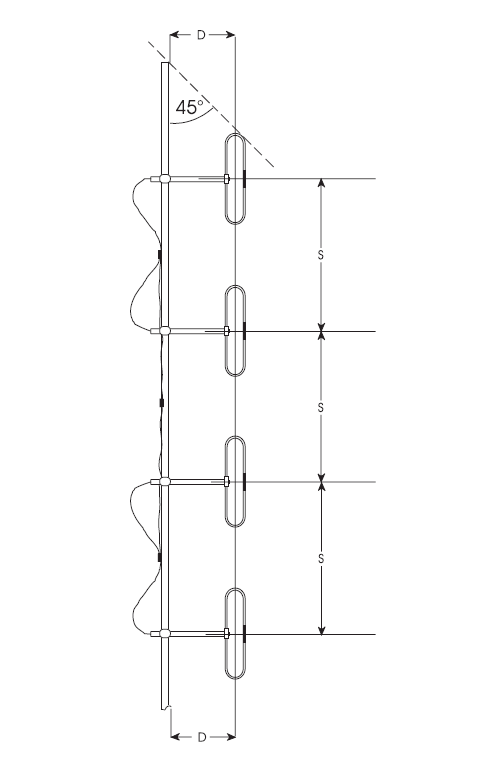
Four Stack
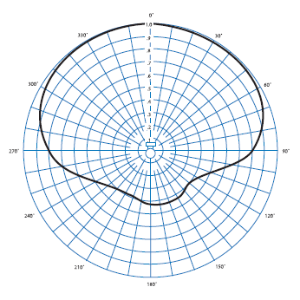
1/4 wave spacing
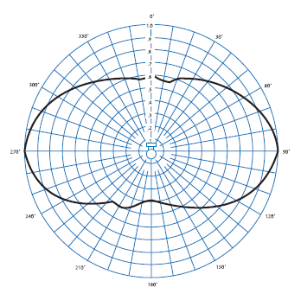
1/2 wave spacing
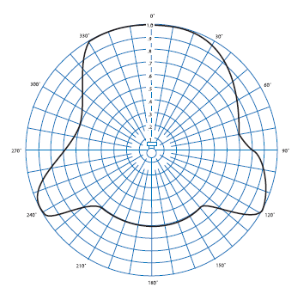
3/4 wave spacing
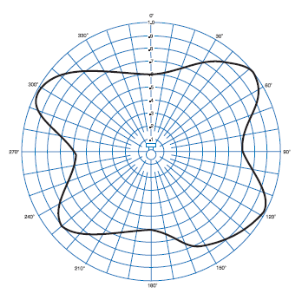
1 wave spacing
| Model Number | MHz Centre Frequency | D = 1/4 wave | D = 1/2 wave | D = 3/4 wave | D = 1 wave | S |
| SMD1 | 77 | 974 | 1948 | 2922 | 3896 | 2922 |
| SMD2 | 161 | 466 | 932 | 1398 | 1863 | 1398 |
| SMD4 | 460 | 163 | 326 | 489 | 652 | 489 |
Phasing UHF Dipole Antennas
When using side mounted dipole antennas it is important to ensure that the antenna to mast spacings AND the antenna to antenna spacings are optimised for your application. The following graphs indicate the optimum antenna centre to antenna centre spacings and antenna to mast spacings for your frequency of use.
On the previous page is an illustration of the various patterns effected at VHF frequencies when side mounted dipole antennas are mounted at differing distances from the support mast.
A similar series of patterns will also be effected at UHF frequencies, however it
is important to note that for any given support mast, the effect on a UHF antenna will be greatly exaggerated, with deeper nulls and more pronounced peaks in the pattern. We urge the use of our BA, EA and OA Series arrays at UHF for predictable pattern performance.
Please note that when using two side mounted dipole antennas phased together, total antenna gain will be increased by 3 dB and if using four antennas, the antenna gain will be increased by 6 dB. This increase in gain is IN ADDITION to any gain which is afforded by the manipulation of the antenna pattern through antenna to mast spacings as shown opposite.
PLEASE NOTE: We strongly recommend against the phasing of 800 MHz side mounted dipole antennas as the control of the dimensions is far too critical to be adequately controlled in the field. Thus, we do not publish any information to assist in the phasing of our 800 MHz side mount dipole antennas.

Four Stack
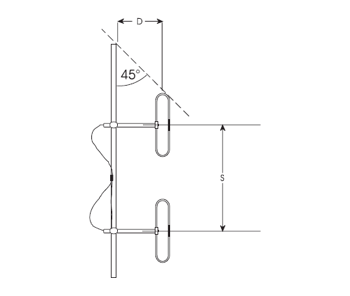
Two Stack
Dipole spacing vs frequency
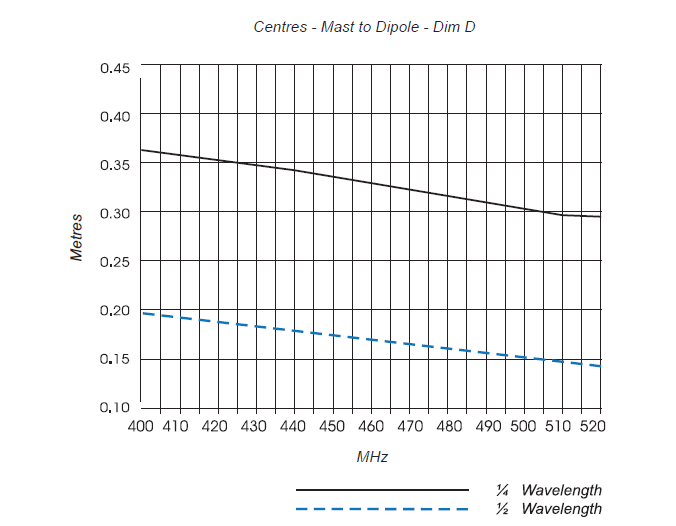

Phasing vhf dipole antennas
When using side mounted dipole antennas it is important to ensure that the antenna to mast spacings AND the antenna to antenna spacings are optimised for your application. The following graphs indicate the optimum vertical spacings and antenna to mast spacings for your frequency of use.
Earlier in this section is an illustration of the various patterns affected at VHF frequencies when side mounted dipole antennas are mounted at differing distances from the support mast.
Please note that when using two side mounted dipole antennas phased together, total antenna gain will be increased by 3 dB and if using four antennas, the antenna gain will be increased by 6dB.
This increase in gains is IN ADDITION to any gain which is afforded by the manipulation of the antenna pattern through antenna to mast spacings as shown opposite.
PLEASE NOTE: For both SMD1 and SMD2 antennas, the full band coverage of the antennas can be maintained for a stack of two or four antennas if the correct phasing harness is used.
Two and four stack dipoles - d

.png)
Two and four stack dipoles - S
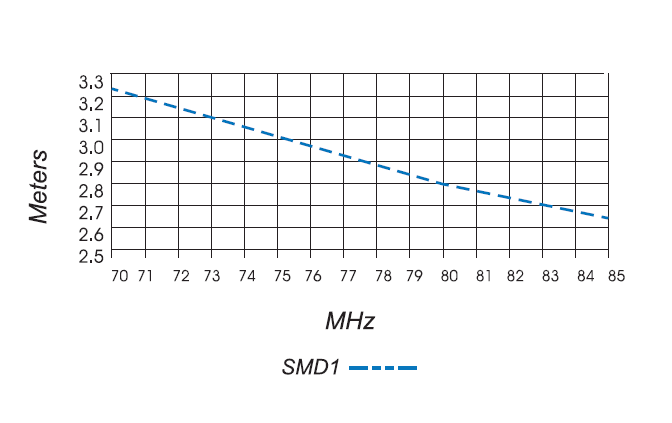
.png)
Want a PDF version of Phasing UHF and VHF Dipole Antennas?
Click the button below to download the guide instantly!

.png)